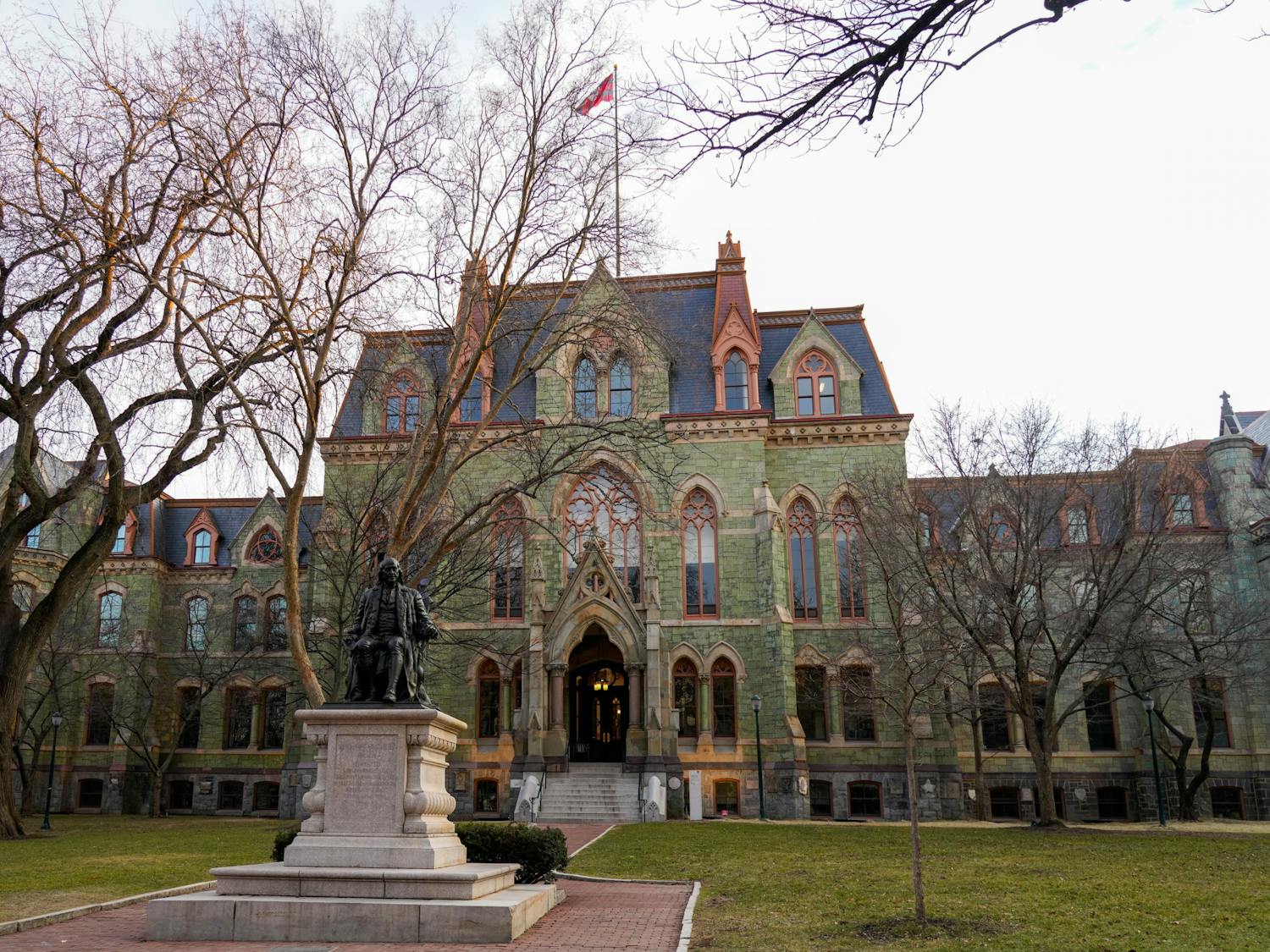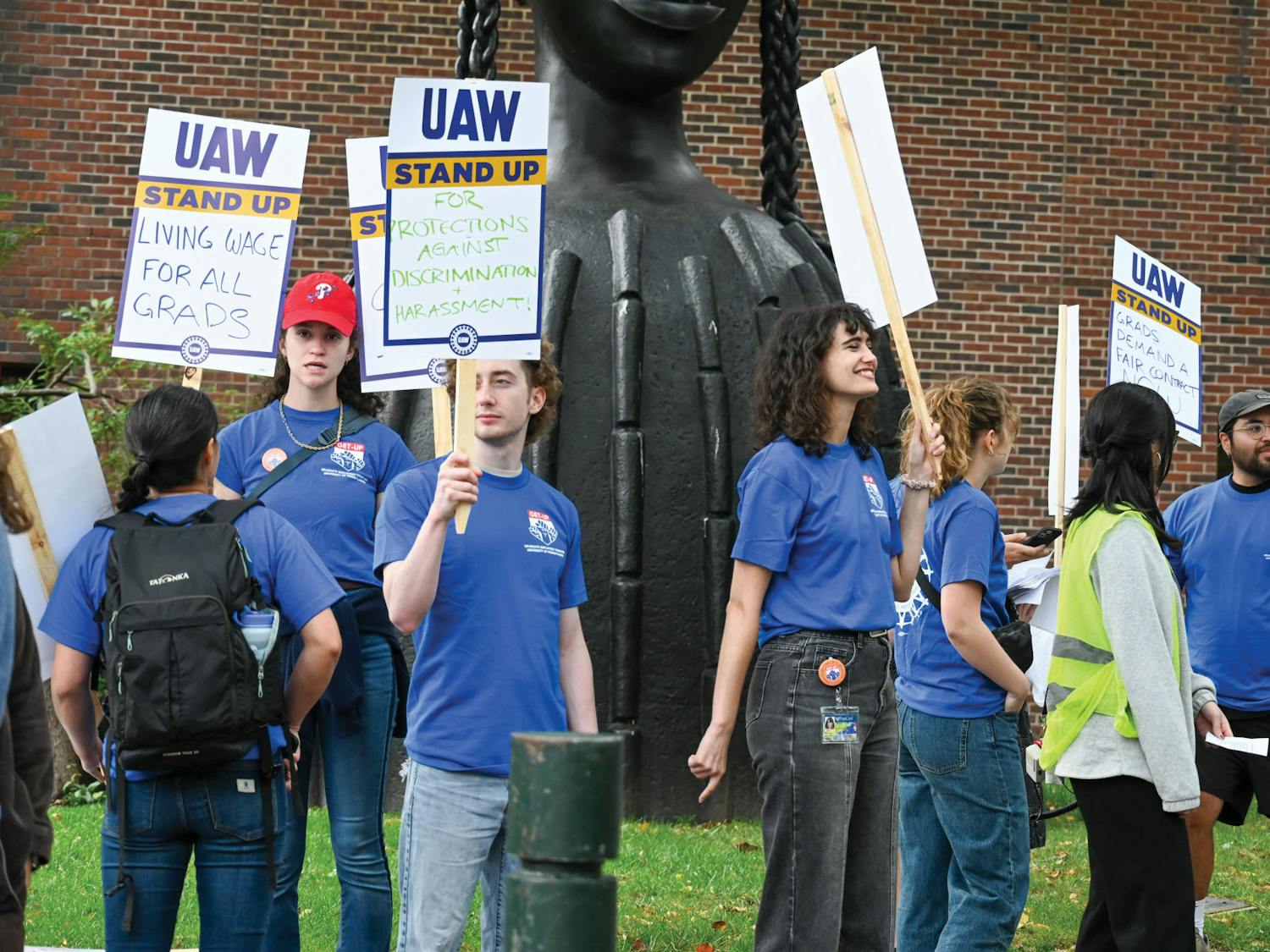Penn's student-run radio station has fallen into disarray this semester, despite student and administrative awareness for almost a year that the building which currently houses the radio station would soon be unavailable.
WQHS has broadcast from 3905 Spruce St. for over 30 years, but the building's availability came into question after co-tenant WXPN made plans to move out over two years ago.
Since WXPN left the Spruce location, WQHS staff has remained in the building as the University conducts demolition and construction activities on site. Additionally, WQHS has been without phone service and Internet for various periods of time, forcing the station to recently stop transmission completely for about a week.
"We didn't see any of it coming. I had no idea all these things were going to happen," station manager and College junior Kaelsie Saravia said. She noted that the student radio station made no provisions for Internet service, despite knowing that WQHS had used WXPN's service, which would likely be terminated after the move. However, the phone service was shut down despite timely payments.
University officials also failed to address underlying questions about WQHS's future in time for this semester's problems to have been averted.
As a Student Activities Council-funded organization, the radio station falls within the purview of the Office of Student Life. Director of Student Life Fran Walker said she has had conversations with WQHS about its "status at the University," but that issues associated with moving and locale fall under the Provost's Office.
Yet Executive Assistant to the Provost Linda Koons said that, while her office has been working on logistics of WQHS's locale, it is not her office's responsibility to oversee communication with the radio station about developments.
While Koons became involved with the issue this summer because she is on a University committee that addresses spacing issues, she said she does not "usually do this," and that it is not her "position to be the official informer" to WQHS about decisions.
Koons also said she "got the feeling no one [at WQHS] was in charge" of informing radio station workers about developments.
The University has discussed the possibility of the radio station and UTV moving into a new location in the basement of Stouffer College House, but that location would be ready in 2006 at the earliest.
While the radio station staff had initially hoped they would be able to stay in their Spruce location until 2006, the University has now indicated that they must be out by winter break so that construction can be completed and the Penn Press can move into the building.
Saravia said that the University's unclear messages about how long the radio station would be able to stay in its current location have caused a tremendous amount of confusion.
"It has been just the biggest hassle not knowing what would happen to us and [having the University] not see the value in the radio station," Saravia said.
She said the problem has been in part due to administrative ignorance of the student radio station and, until recently, confusion about which office at the University is responsible for coordinating the situation with them. She added that Facilities and Real Estate Services did not realize how much work was involved in moving a radio station.
The University has offered a rent-free option to move WQHS into the Hollenback Center -- a Penn building located at 3000 South St. -- any time before winter break.
WQHS managers agreed to the new location because they cannot afford to pay rent. Yet, they have concerns about the distance that students working at the station will have to walk at night.
Koons has been working on what she describes as the "legitimate" safety concerns about walking to and from Hollenback at night by talking with Penn Transit and the Division of Public Safety.
While facilities concerns continue, larger issues remain regarding the University's commitment to a student-run radio station and the relevance of that station, which is run by approximately 93 students and two community members.
WQHS usually broadcasts over ResNet TV, available only in University housing, and over the Internet -- but only a maximum of 40 individuals can listen at any given time.
Koons, in speaking about the Provost Office's involvement with WQHS, mentioned that some administrators were not even aware of the student radio station, saying that some "administrators didn't know about WQHS. It's not their kind of music or their station. And they don't listen to music on the Internet anyway."
Additionally, Walker addressed the value of a student-run, campus-wide radio station broadcast over an AM or FM station by pointing to past problems.
"The University has a history of having problems with a student-run radio station in the past," Walker said, referencing a 1970s run-in that an on-campus radio station had with the Federal Communications Commission.
While Saravia does not know if WQHS necessarily wants to broadcast over a radio frequency, she says that the radio station's "No. 1 goal [is to] reach the University."
"We want to be able to reach everybody here at Penn so we can have a community. ... Right now, that is not really happening."








